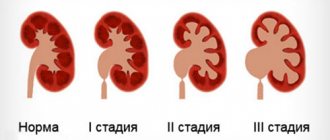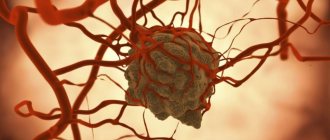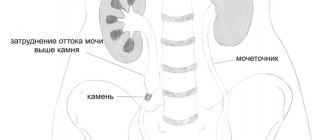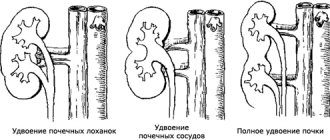Dermatovenerologist
Khasanova
Alina Rashidovna
8 years of experience
Make an appointment
A carbuncle is an inflammatory process of a purulent-necrotic nature. It occurs in the skin and involves several hair follicles, as well as subcutaneous tissue and sebaceous glands. Typically, inflammation is caused by staphylococcus infection, which develops against a background of weakened immunity.
Most often, the formation is localized on the face, back of the neck, buttocks and back. Men suffer the most from the problem. There is also a dependence on the time of year - such inflammation is more common in the summer.
More about the operation
Carbuncle is an acute purulent-necrotic lesion of the skin, characterized by the involvement of several nearby hair follicles in the pathological process with the formation of a general infiltrate.
The causative agent of the disease is staphylococcus (aureus, epidermal, etc.) and its combination with other pathogenic bacteria. The main method of treating such pathologies is surgery. The surgical technique consists of opening the pathological focus, removing purulent contents and all necrotic tissue, as well as ensuring active drainage of the wound. Further conservative therapy is aimed at speedy healing and prevention of possible complications.
General information and code for ICD-10
According to the international classification of diseases, this kidney pathology has the following code:
- L 02 skin abscess, boil, carbuncle;
- L02 B abscess of the skin, boil and carbuncle of other localizations (organs).
The disease has several forms; often the formation is formed against the background of an inflammatory or infectious lesion, which lasts in the body for a long period of time.
The source of infection leads to damage to the pelvis, calyces, and large arteries. The kidney parenchyma is stopped, the outflow of urine is disrupted, and necrotic changes occur in the tissues of the organ.
Against the background of microbial damage, heart attack or ischemic changes in the kidney, necrotic changes occur in the tissues. The organ does not function fully; when the ureter is blocked, the outflow of urine is disrupted.
In fact, at this moment the organ stops functioning, which leads to pathological changes in it.
The danger of the disease lies in the fact that the microorganisms that cause its occurrence can affect other nearby organs. Against the background of such changes, a number of nonspecific signs are observed in the patient’s body.
This makes it difficult to diagnose and carry out treatment, but its effectiveness is low. It is necessary to remove the formation, otherwise there is a high probability of death.
General information about kidney carbuncle:
- localized predominantly on one side;
- leads to necrotic changes in the organ;
- impairs the functional abilities of the kidney;
- often occurs as a complication after an infectious disease with a bacterial complication;
- leads to the development of renal infarction or causes ischemic changes in it.
Most often, the disease develops as a complication of a bacterial infection, provided that pathogenic microorganisms have entered the bloodstream and caused inflammation of the kidney. An inflammatory process with extensive proliferation of microorganisms leads to the formation of a carbuncle in the cortical or pelvicaliceal part of the organ.
But it is worth noting that inflammation develops according to several scenarios and if it is primary in nature, then the symptoms may be mild.
Why surgery is needed
Drug treatment is possible only at the early stage of the disease, when the lesion consists of several small inflammatory foci. After a few days, these tubercles increase in size and form a large, dense infiltrate, bluish in color, filled with purulent and necrotic masses. Inflammation, as a rule, occurs in places characterized by a large accumulation of sweat glands - the back, lower back, neck, head, face.
The main danger of a carbuncle is the high risk of infection spreading into deep tissues and structures. If treatment is not started in a timely manner, the disease is fraught with serious complications, such as:
- phlegmon (spread purulent-inflammatory process);
- purulent meningitis (purulent damage to the membranes of the brain);
- sepsis (general blood poisoning), etc.
If, with the help of antibiotics, it is possible to localize the inflammation within the boundaries of the pathological focus, then the area of skin located above the infiltrate, as a rule, dies. After the independent rupture of the dead membrane and the release of purulent contents, a large wound remains, in the place of which a rough scar is subsequently formed. A timely operation allows you to avoid such problems.
Stages
There are three stages of carbuncle development.
- 1st. On average occurs on the eighth to twelfth day of the onset of the disease. Then the patient notices dense nodules under the skin, gradually merging into one compaction up to six centimeters in diameter. The lump hurts and rises above the skin. It is bluish inside and red on the outside.
- 2nd. It occurs on the thirteenth to twentieth day and is manifested by the formation of several abscesses, the surface of which is opened and purulent discharge (often with bloody impurities) comes out.
- 3rd. As a rule, the third stage covers the twentieth to thirtieth day and is characterized by the development of an ulcer. It can be very deep, affecting muscle tissue.
If the situation is complicated by an infectious disease, these stages can even double.
Cost of opening a carbuncle
The prices indicated in the price list may differ from the actual prices. Please check the current cost by calling +7 495 104 8605 (24 hours a day) or at the GMS Hospital clinic at the address: Moscow, st. Kalanchevskaya, 45.
| Name | Price |
| Major purulent operations (carbuncle, etc.) | RUB 30,552 |
| Opening of a kidney abscess (carbuncle) under ultrasound guidance with drainage | RUB 147,840 |
Dear Clients! Each case is individual and the final cost of your treatment can only be found out after an in-person visit to a GMS Hospital doctor. Prices for the most popular services are indicated with a 30% discount, which is valid when paying in cash or by credit card. You can be served under a VHI policy, pay separately for each visit, sign an agreement for an annual medical program, or make a deposit and receive services at a discount. On weekends and holidays, the clinic reserves the right to charge additional payments according to the current price list. Services are provided on the basis of a concluded contract.
Plastic cards MasterCard, VISA, Maestro, MIR are accepted for payment. Contactless payment with Apple Pay, Google Pay and Android Pay cards is also available.
Western standards of treatment (evidence-based medicine)
Continuous staff development
Regular interaction with leading Russian and foreign medical institutions
Modern medical equipment and advanced diagnostic and treatment methods
Unified standard of service
We work around the clock 24/7/365
Make an appointment We will be happy to answer any questions Coordinator Oksana
Possible complications
There are a number of diseases that occur against the background of a long-term inflammatory process in tissues:
- severe liver damage with the development of liver failure;
- bilateral kidney damage with the development of multiple carbuncles and signs of acute renal failure;
- pneumonia, bronchitis, with the development of pulmonary failure;
- damage to the blood vessels of the brain, the appearance of signs of meningitis;
- ISHD, cardiac infarction, myocardial damage;
- sepsis, septic shock.
The appearance of a carbuncle often leads to death, especially if the patient “missed the moment” and turned to the doctors too late.
Benefits of contacting us
The opening of the carbuncle at the GMS surgery center is carried out using the “one-day surgery” technology. Within an hour after treatment, you will get rid of all discomfort, pain and can return to your usual activities. In more complex cases, hospitalization for a day is possible.
Autopsy of a carbuncle at GMS Hospital is:
- a team of experienced surgeons with many years of experience;
- safe anesthesia;
- 100% sterility;
- the use of gentle, minimally invasive surgical techniques;
- absence of surgical complications;
- short healing time.
The use of microsurgical technologies, including laser and radio wave surgery, makes it possible to minimize damage to health and perform surgery quickly, painlessly and with maximum therapeutic results. You can make an appointment with a surgeon by phone or using the online form.
Treatment methods for carbuncle
Small carbuncles that occur without noticeable intoxication and deterioration of the patient’s general condition are treated on an outpatient basis.
In cases where
- the patient is severely intoxicated,
- the carbuncle is large and localized on the face,
- the patient suffers from uncompensated diabetes mellitus or other serious diseases,
treatment is carried out in a hospital.
Conservative treatment
If treatment of the carbuncle was started at the stage of its maturation, then conservative methods are used, which in most cases leads to regression of the disease, that is, resorption of the infiltrate.
Antibacterial drugs with a broad spectrum of action are indicated for oral administration to the patient.
At the same time, the carbuncle itself is injected with antibiotics. To reduce pain, analgesics (Novocaine, Lidocaine) are used.
The surface of the carbuncle is treated with ethyl alcohol or other alcohol-containing antiseptics. An aseptic dressing is applied. Syntomycin or streptomycin emulsions are also used.
Surgery
If the carbuncle enters the necrotic stage, then this is an indication for surgery, which is performed while using antibiotic therapy.
The operation consists of dissecting the carbuncle and removing necrotic tissue from it.
Then a tampon with a hypertonic sodium chloride solution and proteolytic enzymes is inserted into the wound.
To clean the postoperative wound and completely remove necrotic tissue, the dressing is changed daily.
Physiotherapy
At the maturation stage, as well as in the postoperative period, UHF therapy and local ultraviolet radiation are prescribed.
To stimulate the body's defenses, intravenous laser and ultraviolet irradiation of blood can also be performed.
More information about the treatment method
Make an appointment Do not self-medicate. Contact our specialists who will correctly diagnose and prescribe treatment.
Rate how useful the material was
thank you for rating
Indications for surgery
Indications for surgical intervention are:
- large carbuncles, accompanied by significant tissue swelling;
- accumulation of purulent contents and the formation of a necrotic mass (the appearance of fluctuation zones);
- the presence of concomitant diseases, in particular diabetes mellitus;
- the occurrence of purulent-necrotic infiltrate in weakened patients;
- high risk of infection spreading into deep tissues;
- development of general intoxication - deterioration in general health, fever, headache, sleep disturbances, etc.
Ignoring timely treatment is fraught with the development of severe complications. Autopsy of a pathological lesion at the GMS surgical center is performed on an outpatient basis. Preparation for the operation is minimal, so the intervention is performed immediately on the day of treatment.
Who to contact and how to diagnose?
If characteristic symptoms appear, you should seek help from a urologist. Consultation may be required:
- neurologist;
- endocrinologist;
- cardiologist;
- nephrologist;
- therapist;
- gastroenterologist;
- pulmonologist.
Consultation with specialists is required only if there are characteristic signs of damage to nearby organs. But the treatment of the underlying disease will be carried out by a urologist.
If a kidney carbuncle is suspected, a number of diagnostic procedures are prescribed:
- Ultrasound of the kidney and ureters is not a highly informative examination, but its implementation will help detect an increase in the organ’s size.
- Urography with the introduction of contrast will help determine the presence of a formation of unknown etiology, which will have a clear localization and heterogeneous structure.
- CT is an informative examination, which is carried out in conjunction with ultrasound, helps to clearly determine the size of the carbuncle and its location.
- Dopplerography is necessary to identify foci of necrosis and is carried out as part of differentiated diagnostics.
It is also necessary to submit urine for culture, biochemistry and blood for general analysis. If necessary, other diagnostic procedures may be prescribed.
Features of the rehabilitation period
Rehabilitation after opening the infiltrate lasts 10-14 days. During this time, you should strictly adhere to all medical recommendations:
- for 5-7 days after the intervention, you need to change the dressings daily, using wound healing and antiseptic drugs prescribed by the doctor;
- avoid skin injury;
- eat rationally;
- maintain careful hygiene;
- lead an active, healthy life.
To prevent the spread of infection, a short course of massive antibiotic therapy is prescribed. To speed up healing, a course of physiotherapeutic procedures (UHF, UV irradiation) is carried out. For patients with a predisposition to purulent-inflammatory diseases of the skin and subcutaneous structures, consultation with an endocrinologist and immunologist is recommended. You can learn more about the operation at a consultation with a surgeon. You can make an appointment with a GMS Hospital specialist around the clock – on the website and by phone.









